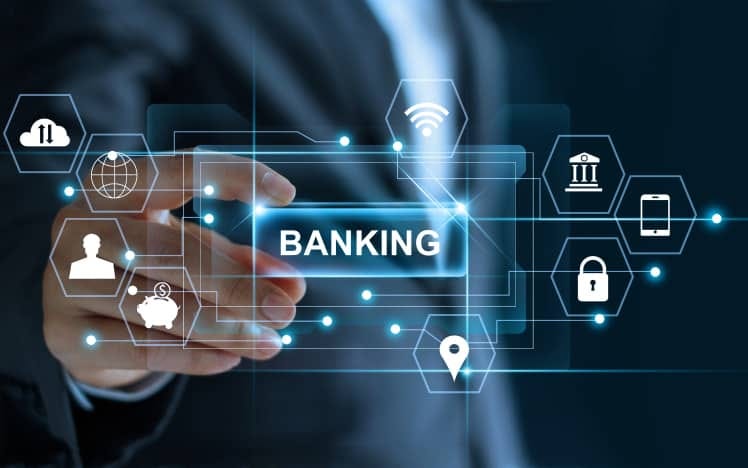The banking industry is undergoing a significant transformation, driven by technological advancements that are redefining the way financial institutions operate. From mobile banking to artificial intelligence, modern innovations are enhancing efficiency, security, and customer experience. As we look ahead, technology will continue to shape the future of banking, offering new opportunities and challenges for businesses and consumers alike.
The Rise of Digital Banking
One of the most significant changes in the financial sector is the shift towards digital banking. Traditional banks are now competing with digital-only banks, also known as neobanks, which offer seamless online and mobile services. These digital platforms eliminate the need for physical branches, reducing operational costs while improving accessibility for customers worldwide. With features like real-time transaction tracking, automated savings, and AI-driven customer support, digital banking is revolutionizing financial management.
Moreover, the increasing reliance on smartphones has accelerated the adoption of mobile banking apps. Consumers can now transfer money, pay bills, and manage their accounts with just a few taps. This convenience has made banking more efficient and user-friendly, encouraging financial institutions to invest heavily in digital transformation.
Artificial Intelligence in Banking
Artificial intelligence (AI) is playing a crucial role in modernizing the banking industry. Banks use AI-powered chatbots to provide instant customer service, answering inquiries and resolving issues in real-time. These AI solutions enhance customer engagement while reducing the need for human intervention.
Additionally, AI-driven analytics help banks detect fraudulent activities by analyzing transaction patterns. By leveraging machine learning algorithms, financial institutions can identify unusual behavior and prevent cyber threats before they cause significant damage. AI is also used for credit scoring and risk assessment, enabling banks to offer personalized loan options based on a customer’s financial history and spending habits.
The Impact of Blockchain on Banking
Blockchain technology is transforming banking by providing a secure, decentralized way to process transactions. Traditional banking systems rely on intermediaries to validate transactions, which can be time-consuming and costly. In contrast, blockchain eliminates these middlemen, allowing for faster and more transparent transactions.
Cryptocurrencies, powered by blockchain, have also emerged as an alternative to conventional banking. While regulatory challenges persist, many banks are exploring the use of blockchain for cross-border payments, smart contracts, and identity verification. The potential for blockchain to enhance security and efficiency makes it a game-changer for the future of banking.
Fintech Disruptors and Their Influence
Financial technology (fintech) companies are disrupting traditional banking models by offering innovative solutions tailored to modern consumers. Fintech startups specialize in services such as peer-to-peer lending, robo-advisors, and digital wallets, providing alternatives to conventional banking products.
The rise of fintech has pushed traditional banks to collaborate with or acquire these startups to stay competitive. Banks are also investing in open banking initiatives, allowing third-party developers to create applications that enhance financial services. This shift towards a more collaborative financial ecosystem is driving innovation and improving customer experience.
Cybersecurity Challenges in the Digital Era

With the increasing digitization of banking, cybersecurity has become a top priority. Banks are prime targets for cybercriminals due to the vast amounts of sensitive financial data they handle. To combat cyber threats, financial institutions are investing in advanced security measures such as multi-factor authentication, biometric verification, and encryption.
Regulatory bodies are also implementing stringent compliance requirements to ensure customer data protection. However, as cyber threats evolve, banks must continuously update their security strategies to stay ahead of potential risks. Consumer awareness and education also play a crucial role in preventing fraud and ensuring safe online banking practices.
The Future of Banking: What to Expect
As technology continues to evolve, the future of banking will likely see even greater integration of AI, blockchain, and fintech solutions. Banks will focus on providing more personalized financial services, leveraging data analytics to understand customer needs better. The rise of central bank digital currencies (CBDCs) may also reshape the financial landscape, offering a government-backed digital alternative to traditional money.
Furthermore, banking will become increasingly seamless and embedded in everyday activities. From voice-activated transactions to AI-driven financial planning, the industry is moving towards a more connected and intuitive banking experience. Financial institutions that embrace innovation will thrive, while those that resist change risk falling behind.
Conclusion
The banking industry is in the midst of a technological revolution, with digital banking, AI, blockchain, and fintech driving unprecedented change. As financial institutions adapt to these innovations, customers can expect more convenient, secure, and efficient banking services. However, with technological advancements come challenges, particularly in cybersecurity and regulatory compliance. The future of banking will be shaped by those who can successfully navigate these challenges while embracing the opportunities that technology presents.
In this fast-paced digital age, staying informed about banking trends and advancements is crucial. Whether you’re a consumer or a business, understanding the impact of technology on banking will help you make informed financial decisions and take full advantage of the evolving financial landscape.
